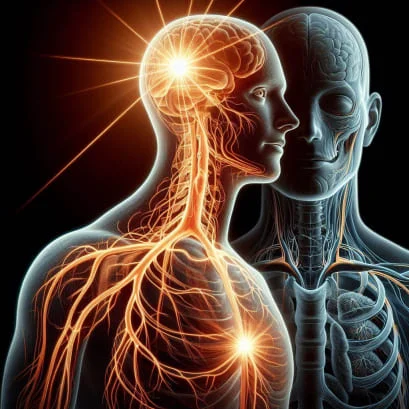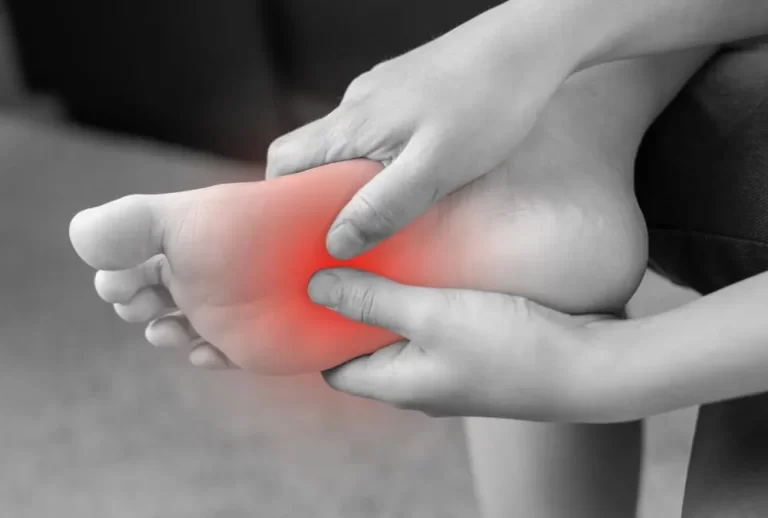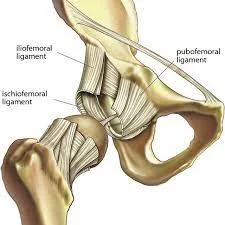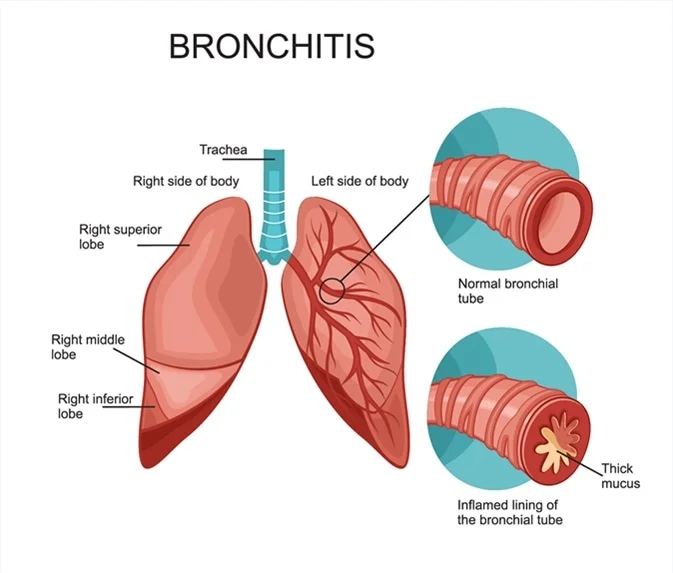Mononeuropathy
Mononeuropathy is a disorder caused by injury to a single nerve. This type of injury can occur anywhere on the body, although it is most typically seen in the hands, feet, and face.
The term “neuropathy” refers to conditions that affect the peripheral nerves, which are not a component of the brain or spinal cord. When damage is restricted to a single nerve or a group of nerves, the condition is called mononeuropathy.
This illness affects the nerve or group that corresponds to that part of the body, making it harder for that area to move, feel, or function. A mononeuropathy could affect any part of the body. Different kinds of mononeuropathy exist, indicating varying degrees of severity, rareness, and symptoms. One more common kind of mononeuropathy is carpal tunnel syndrome.
Damage to a single nerve, usually one that is near a bone or the skin, is known as mononeuropathy. Carpal tunnel syndrome is among the most well-known types of mononeuropathy. The range of treatments includes surgery, steroid injections, painkillers, and reducing pressure on the nerve.
What is Mononeuropathy?
- Mononeuropathy is a kind of peripheral neuropathy or injury to a nerve not part of the brain or spinal cord. Injury is the most common cause of mononeuropathy. Isolated nerve injury can also result from systemic disorders, which are diseases that affect the entire body.
- Peripheral nerves are any cranial, spinal, or nerve branch that links the brain and spinal cord, the central nervous system, and the rest of the body. A single peripheral nerve injury or malfunction is called “mononeuropathy”. Most mononeuropathies damage both motor and sensory functions, usually affecting the hands, arms, or feet.
- Cubital tunnel syndrome and carpal tunnel syndrome are two of the most prevalent mononeuropathies. The ulnar nerve, which supplies feeling to the ring and little fingers, as well as a portion of the palm and the bottom of the forearm, is neuropathy. Cubital tunnel syndrome is caused by this neuropathy.
- On the other hand, neuropathy of the median nerve which supplies feeling to the thumb, index finger, middle finger, and fourth fingers is referred to as carpal tunnel syndrome. Peroneal nerve dysfunction is another frequent neuropathy that affects the peroneal nerve, a branch of the sciatic nerve that supplies sensation and movement to the toes, lower leg, and foot.
Causes of Mononeuropathy
Mononeuropathy refers to nerve injury induced by a variety of disorders. Health problems that might induce mononeuropathy include.
- Autoimmune illnesses: These include lupus, rheumatoid arthritis, Guillain-Barré syndrome, chronic inflammatory demyelinating polyneuropathy, and vasculitis. Polyneuropathy can also be caused by some malignancies that affect the immune system. This is a kind of autoimmune illness known as paraneoplastic syndrome.
- Diabetes and Metabolic syndrome: This is the most typical reason. More than half of diabetics get neuropathy.
- Infections: These include viral or bacterial illnesses including Lyme disease, shingles, hepatitis B and C, leprosy, diphtheria, and HIV.
- Disorders that can be inherited: Charcot-Marie-Tooth disease is a kind of genetic neuropathy that runs in families.
- Tumors: Cancerous growths, also known as malignant, and noncancerous growths, also known as benign, can form on or push on nerves.
- Bone marrow diseases: These include monoclonal gammopathies, a kind of myeloma that affects the bones, lymphoma, and the uncommon illness amyloidosis.
- Other illnesses: These include metabolic diseases like kidney or liver illness, as well as hypothyroidism, which is an underactive thyroid.
- Alcohol use disorder: Bad food choices made by persons with alcohol use disorder, commonly known as alcoholism, and poor vitamin absorption can result in low levels of key vitamins in their bodies.
- Exposure to toxins: Toxic substances include industrial chemicals and heavy metals like lead and mercury.
- Medicines: Certain medications, particularly chemotherapy used to treat cancer, might result in mononeuropathy or peripheral neuropathy.
- Damage or pressure on the nerve: Peripheral nerves can be severed or damaged as a result of injuries from car accidents, falls, or sports. Nerve pressure can occur as a result of wearing a cast, using crutches, or repeatedly performing an action like typing.
- Low vitamin levels: B vitamins, particularly B-1, B-6, and B-12, as well as copper and vitamin E, are essential for nerve health.
Types of Mononeuropathy
- Chronic neuropathy refers to symptoms that develop slowly.
- Acute neuropathy refers to symptoms that appear suddenly. Neuropathy can be inherited. Charcot-Marie-Tooth disease is the most prevalent kind of hereditary neuropathy, which is a collection of motor and sensory neuropathies affecting the arms and legs.
- Acquired neuropathy is far more prevalent and is typically caused by disease or injury. Diabetes causes nerve damage, which is known as diabetic neuropathy.
- Idiopathic neuropathy is defined as a condition when there is no recognized etiology.
Mononeuropathy can affect any region of the body. There are about 100 different kinds of peripheral neuropathy. Some of the most common include:
- Axillary nerve dysfunction.
- Carpal Tunnel Syndrome
- Common Peroneal Nerve Dysfunction
- Possible diagnoses include cranial mononeuropathy and femoral neuropathy.
- Radial Nerve Dysfunction
- ulnar nerve dysfunction
- unilateral foot drop
- sciatic nerve dysfunction.
- Thoracic radiculopathy
- Lumbar radiculopathy
Symptoms of Mononeuropathy
Every neuron in the peripheral system has an individual role. Symptoms vary depending on the type of nerve involved. Nerves are separated into:
- Sensory nerves receive sensations from the skin, such as temperature, discomfort, vibration, and touch.
- Motor neurons control muscular movement.
- Autonomic nerves regulate processes such as blood pressure, perspiration, heart rate, digestion, and bladder function.
Symptoms of peripheral neuropathy may include
- The gradual development of numbness, prickling, or tingling in the feet or hands. These feelings might travel up into your legs and arms.
- Sharp, stabbing, throbbing, or searing pain.
- Extremely sensitive to touch.
- Discomfort during actions that should not cause discomfort, such as putting weight on your feet or wrapping them in a blanket.
- Falls are caused by a lack of coordination.
- Muscular weakness.
- When you’re not wearing gloves or socks, it feels like you are.
- Inability to move if motor nerves are compromised.
Symptoms of autonomic nerve injury may involve.
- Heat sensitivity.
- Excessive sweating or inability to sweat.
- Bowel, bladder, or digestive issues.
- Drops in blood pressure can cause dizziness or lightheadedness.
Risk Factors of Mononeuropathy
- Risk factors for peripheral neuropathy include diabetes, particularly if blood sugar levels are not adequately managed.
- Alcohol misuse.
- Low amounts of vitamins in the body, particularly vitamin B-12.
- Infections include Lyme disease, shingles, hepatitis B and C, and HIV.
- Autoimmune illnesses, such as rheumatoid arthritis and lupus, occur when the immune system assaults its tissues.
- Disorders involving the kidney, liver, or thyroid.
- Toxicological exposure.
- Repetitive motion, such as those required for specific vocations.
- Neuropathy is present in the family history.
Diagnosis of Mononeuropathy
If you experience signs of nerve injury, schedule an appointment with your doctor as soon as possible. Prepare to provide a comprehensive medical history, including any prescription and over-the-counter drugs and supplements you are currently using.
Your doctor will conduct a complete medical exam. Diagnostic testing can assist in determining the underlying cause of your ailment. Examples include:
- Electromyograms (EMG), measure electrical activity in the muscles.
- Nerve conduction tests measure the speed of electrical activity in the nerves.
- A nerve biopsy is a procedure in which your doctor removes a tiny portion of the nerve to assess damage.
If your doctor believes that neuropathy is the result of an accident or that nerve damage is a sign of an autoimmune illness, they may prescribe one of the following tests to confirm the diagnosis.
- Magnetic resonance imaging (MRI).
- A computed tomography (CT) scan.
- X-ray, antinuclear antibody panel.
- C-reactive protein,
- Rheumatoid factor.
- Sedimentation rate.
- Blood
- Thyroid testing.
Treatment of Mononeuropathy
Treatment will be determined by the underlying cause and severity of nerve injury. In rare circumstances, the injured body part may recover on its own, eliminating the need for therapy.
- If mononeuropathy is caused by a pre-existing medical condition, therapy will include both treating nerve damage and addressing the underlying cause. For example, if nerve pain is a consequence of diabetes, your doctor may offer therapy to improve blood sugar management to appropriately treat the nerve damage.
- Corticosteroids are widely used to treat the swelling and pressure induced by mononeuropathy. Symptoms may also be relieved with pain medication. Gabapentin has been demonstrated to be very beneficial in treating specific kinds of mononeuropathy.
- Physical therapy can assist in retaining muscular strength in the damaged portion of the body. If required, you may need to wear an orthopedic device, such as braces, splints, or special shoes.
- If the neuropathy is compression-related, such as carpal tunnel syndrome, surgery may be required to resolve the problem.
- To address the consequences of mononeuropathy on daily living, occupational therapy, and prospective job retraining may be required in addition to the selected treatment.
- Furthermore, acupuncture and biofeedback may be effective supplementary therapy for this illness.
Complications
- Complications of peripheral neuropathy may include burns, skin lesions, and foot wounds. You may not notice temperature fluctuations or discomfort in numb portions of your body.
- Infection: Your feet and other places that lack feeling might be harmed without your knowledge. Check these areas regularly, wear close-toed, well-fitting shoes, and treat small injuries before they turn into infections especially if you have diabetes.
- Falls: Weakness and loss of feeling may be linked to poor balance and falling. Installing handrails in the bathroom, using canes or walkers as needed, and walking solely in well-lit areas can all help to reduce your risk of falling.
Prevention of Mononeuropathy
Manage the underlying conditions.
The best method to avoid peripheral neuropathy is to address any medical issues that put you at risk.
Make healthy lifestyle decisions.
- These practices promote nerve health:
- To keep your nerves healthy, eat plenty of fruits and vegetables, complete grains, and lean protein. Consuming meats, fish, eggs, low-fat dairy products, and fortified cereals can help prevent vitamin B-12 deficiency. If you’re vegetarian or vegan, fortified cereals are a decent source of vitamin B-12, but see your healthcare provider about B-12 supplements.
Exercise frequently
- With the approval of your doctor, attempt to exercise for at least 30 minutes to an hour three times each week.
- Avoid factors that might cause nerve injury. These variables can include repetitive actions, exposure to harmful substances, smoking, and excessive alcohol consumption.
Outlook for Mononeuropathy
- Nerve discomfort might endure a long period. Untreated nerve discomfort might lead to lifelong nerve damage.
- Nerve damage can result in a loss of feeling, making it harder to detect a new injury. This increases the likelihood of developing more nerve injury.
- Your unique long-term outlook is determined by the exact reason. Early therapy often improves long-term prospects.
FAQs
What are the symptoms of mononeuropathy?
Recognize the Symptoms of Mononeuropathy:
loss of feeling.
Tingles and burns.
Lack of sensation, numbness.
Lack of coordination.
Loss of reflexes.
Muscle twitching, cramping, and spasms.
weakness.
pain.
What’s the difference between mononeuropathy and polyneuropathy?
The main difference between mononeuropathy and polyneuropathy is that the former refers to damage to a single nerve, whilst the latter refers to damage to numerous nerves. Both are kinds of peripheral neuropathy.
What is an example of mononeuropathy?
Mononeuropathy is defined as an injury to a single nerve, typically located near the skin and a bone. Carpal tunnel syndrome is one of the most well-known examples of mononeuropathy. Treatment options include nerve pressure relief, analgesics, steroid injections, and surgery.
What is diabetic mononeuropathy?
Diabetic mononeuropathies encompass cranial neuropathies, entrapment and pressure neuropathies, and radiculopathies. Furthermore, the unusual condition of diabetic amyotrophy and neuropathic cachexia, characterized by severe thigh muscle weakening and weight loss, is reported.
What exactly are the causes of mononeuropathy?
Mononeuropathy can be caused by disease anywhere along the peripheral nerve’s length, from the dorsal root ganglia to the lumbosacral plexus and the terminal nerves. Dysfunction can result in weakness, discomfort, or sensory loss.
Is mononeuropathy considered a disability?
Is mononeuropathy considered a disability?
The SSA considers neuropathy to be a handicap if it causes serious limits in motor function in two extremities. Alternatively, it is classified as a handicap if it causes significant limits in mental and behavioral work-related abilities.
References
- Phillips, N. (2018, September 29). Isolated nerve dysfunction. Healthline. https://www.healthline.com/health/isolated-nerve-dysfunction#prevention
- Mononeuropathy: MedlinePlus Medical Encyclopedia. (n.d.). https://medlineplus.gov/ency/article/000780.htm#:~:text=Mononeuropathy%20is%20a%20type%20of,also%20cause%20isolated%20nerve%20damage.
- Peripheral neuropathy – Symptoms and causes – Mayo Clinic. (2023, September 2). Mayo Clinic. https://www.mayoclinic.org/diseases-conditions/peripheral-neuropathy/symptoms-causes/syc-20352061
- Professional, C. C. M. (n.d.-h). Mononeuropathy. Cleveland Clinic. https://my.clevelandclinic.org/health/diseases/16014-mononeuropathy








One Comment